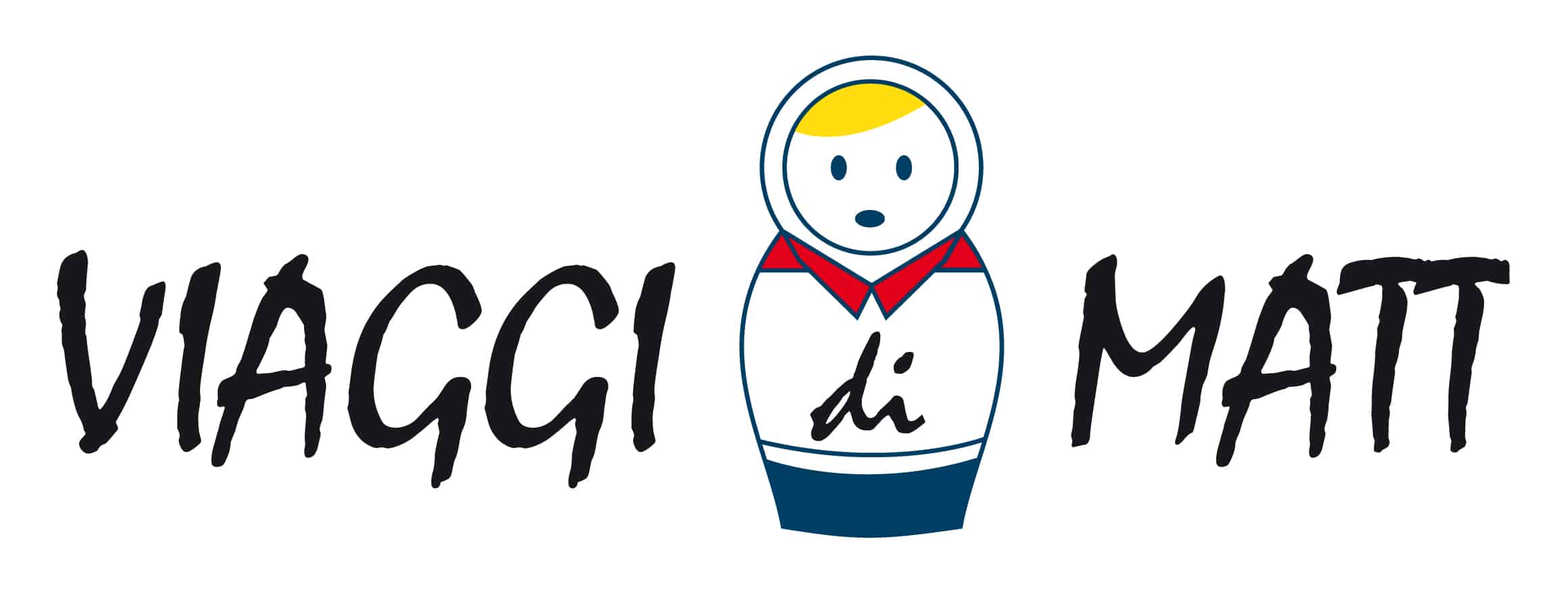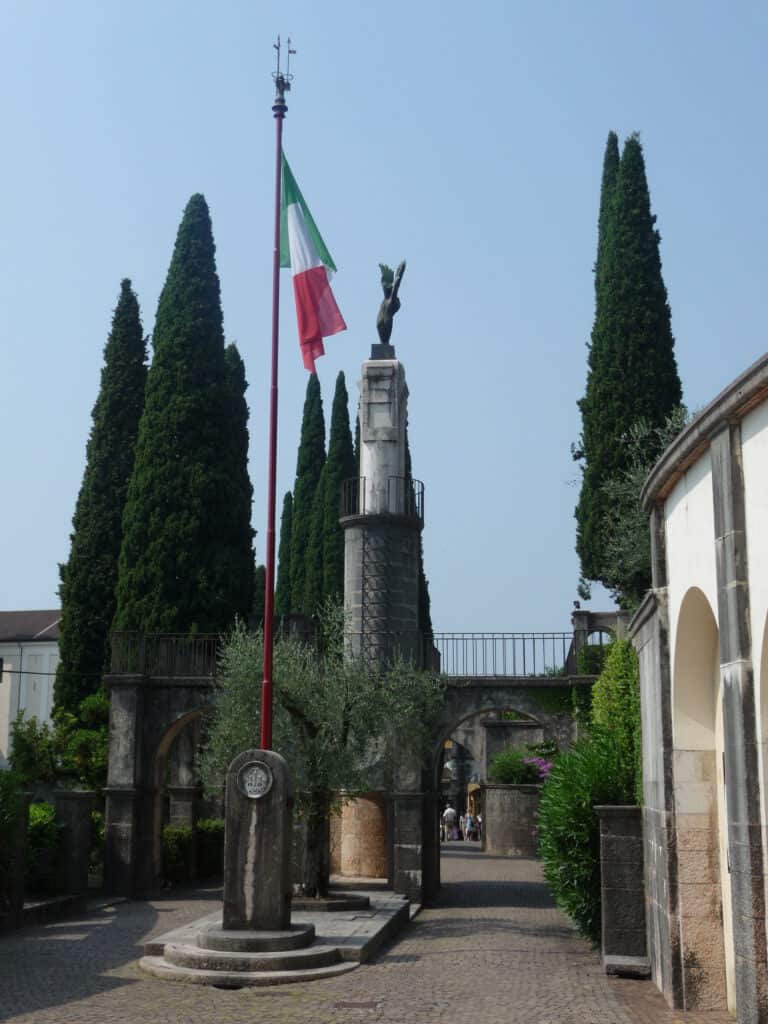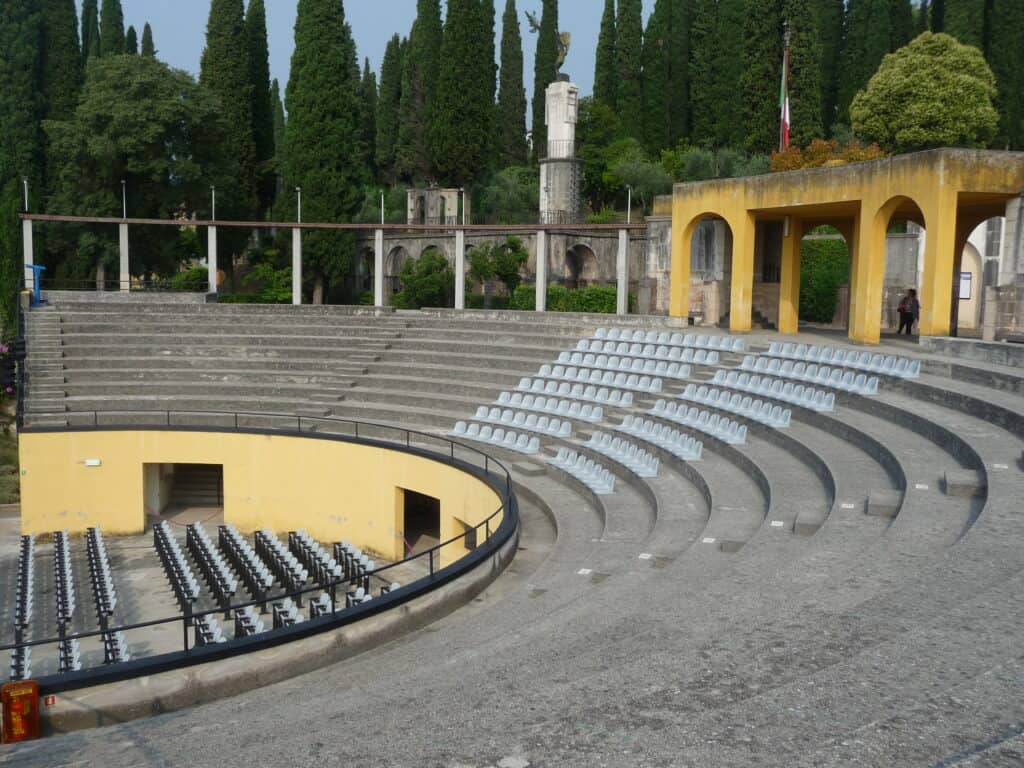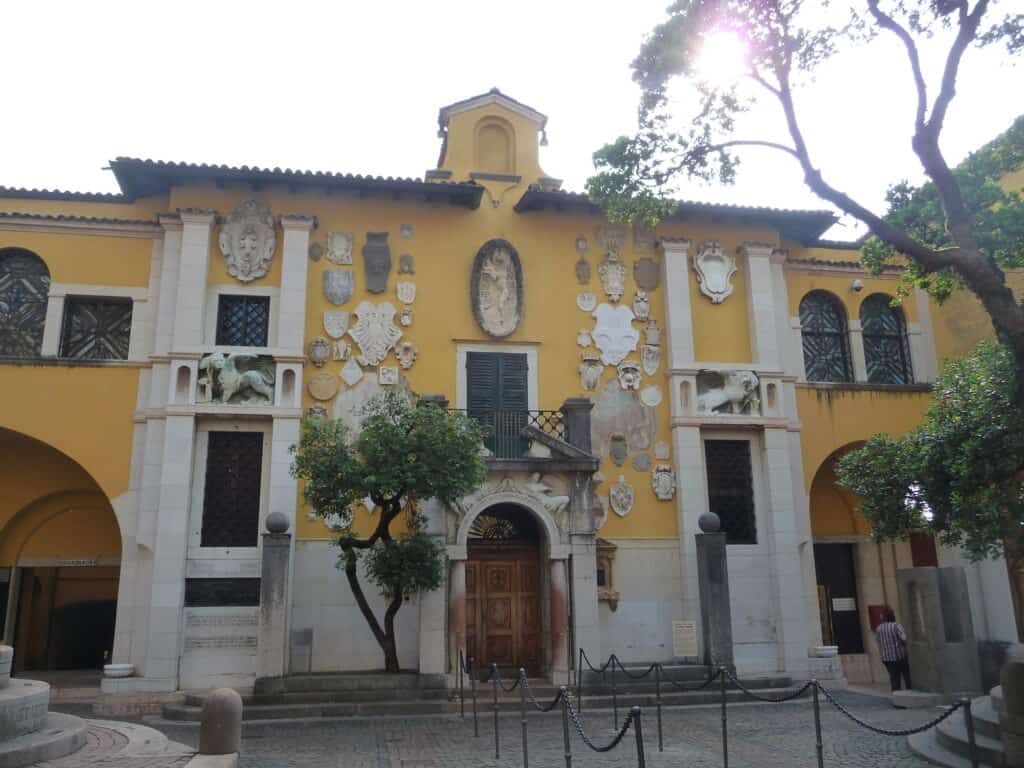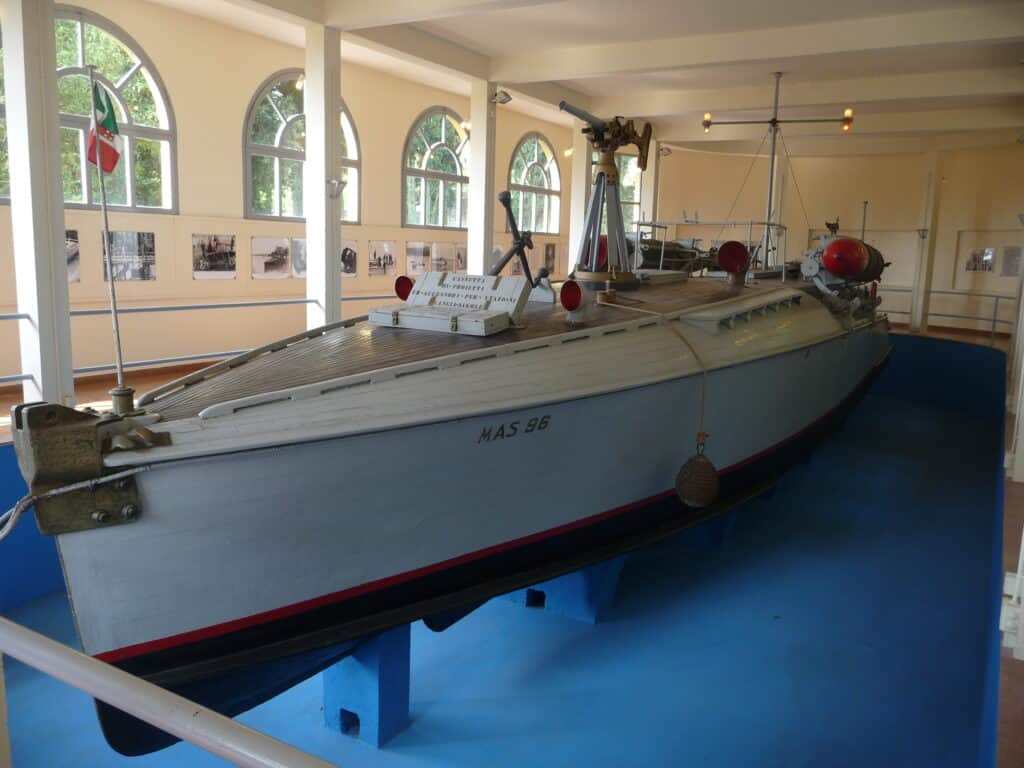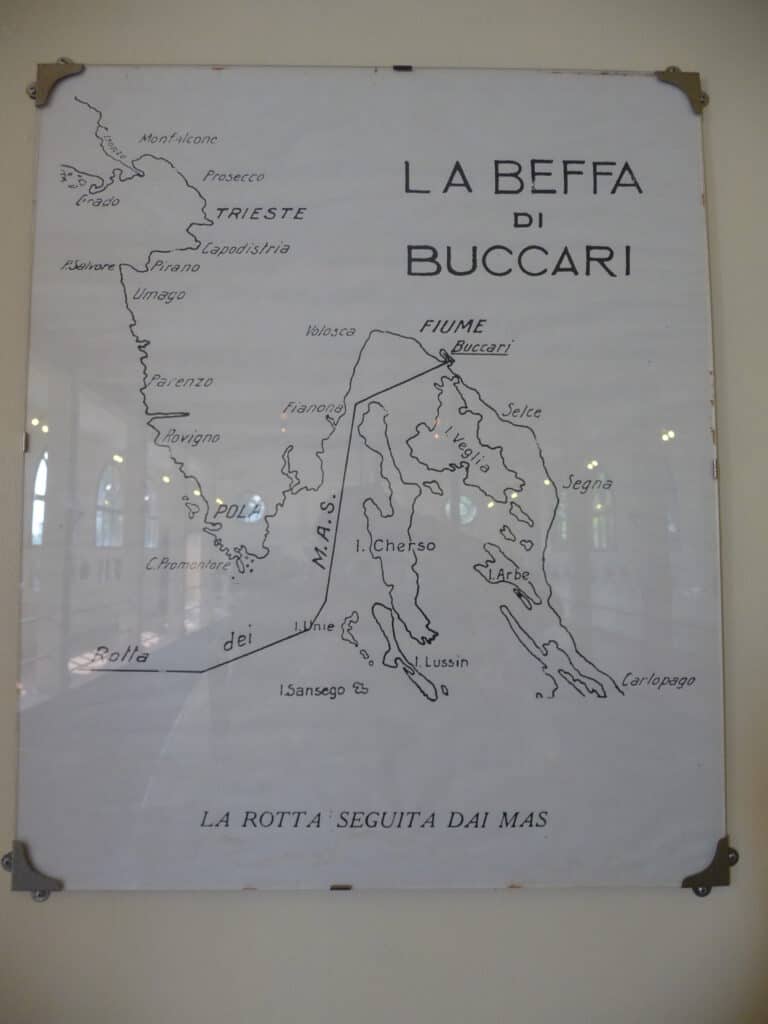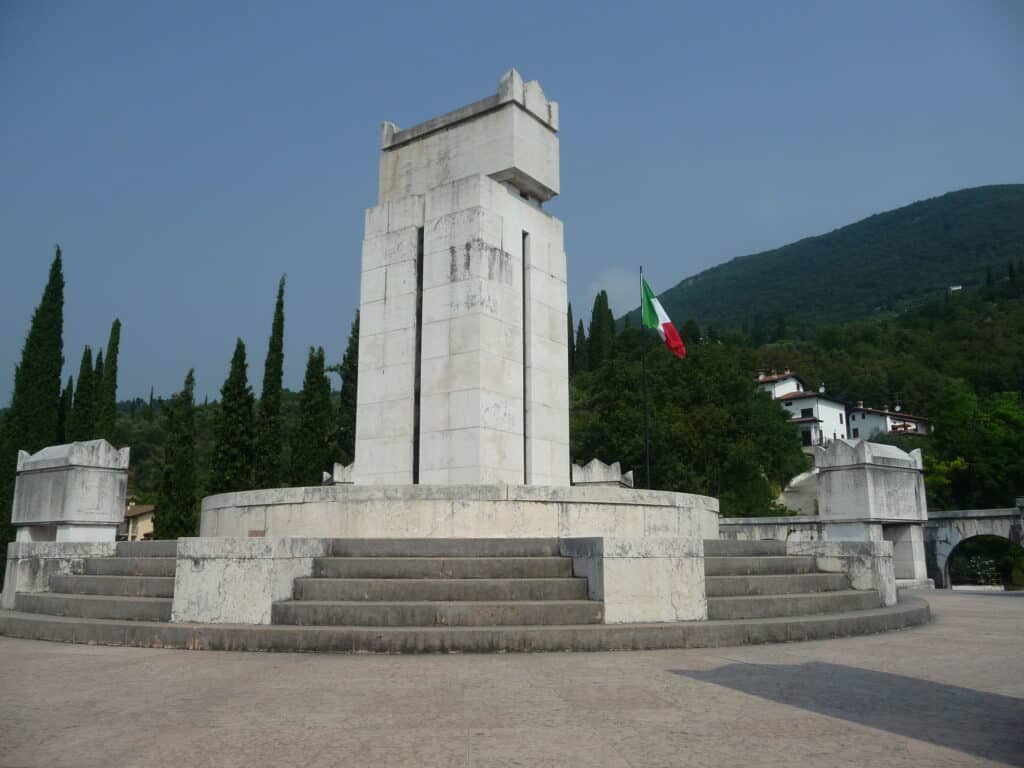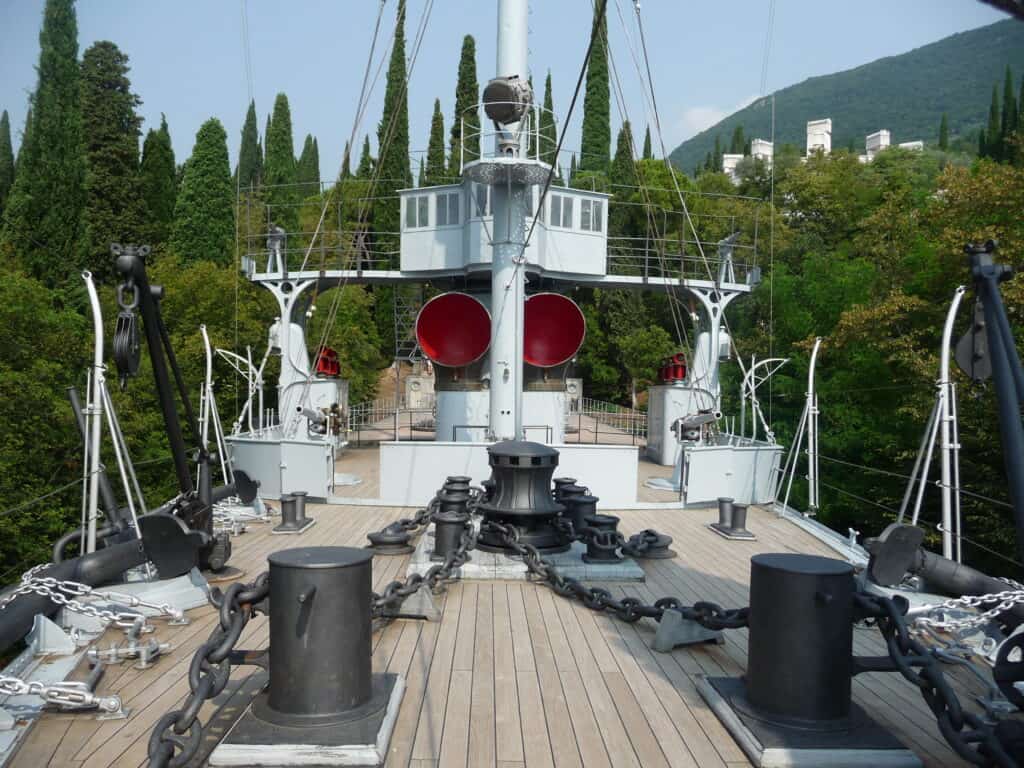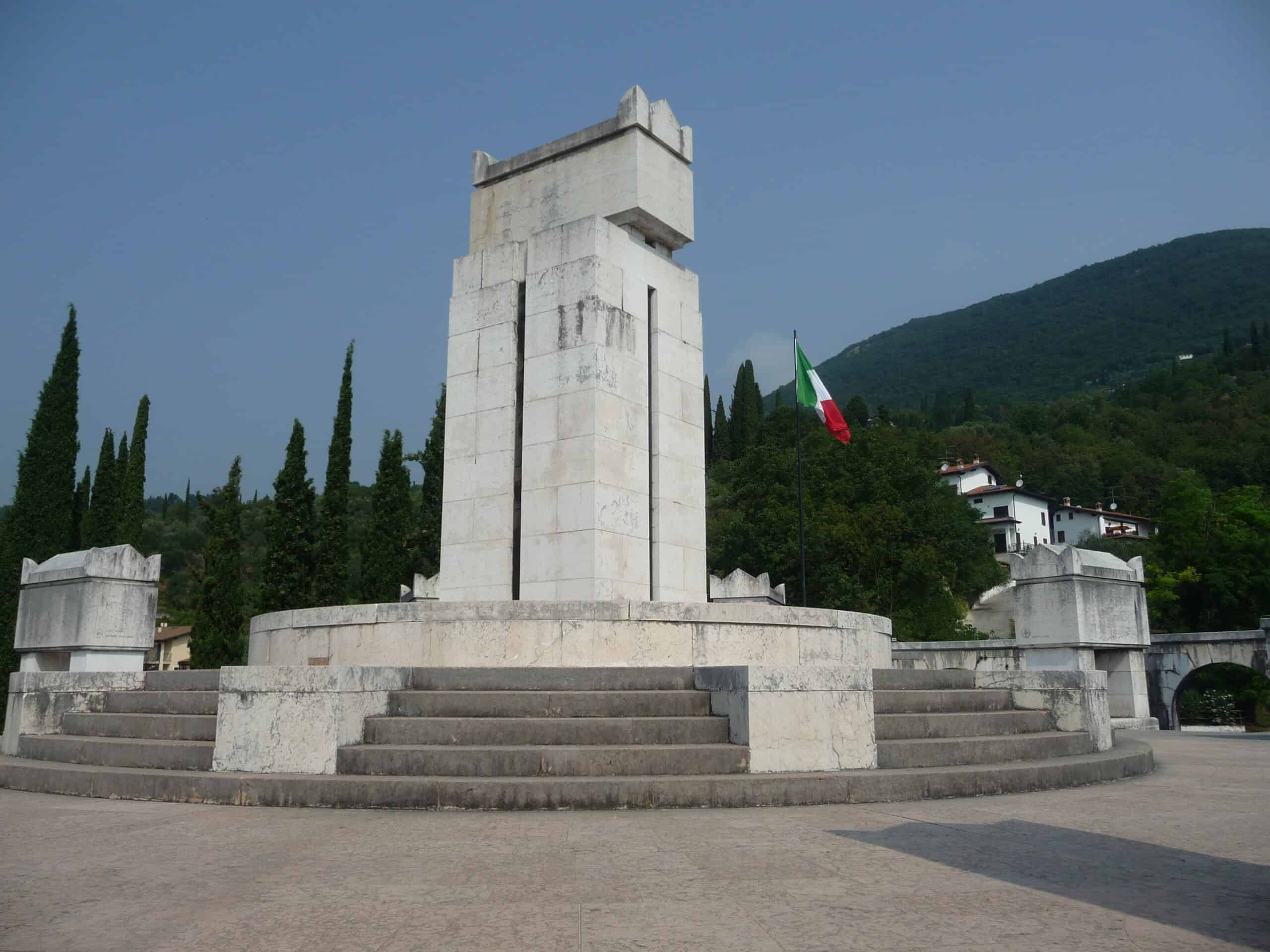
The Vittoriale degli Italiani, a hillside estate with a series of buildings, streets, squares, an open-air theatre, gardens and waterways was built starting in 1921.
Located in Gardone Riviera on the Brescia side of Lake Garda, the estate was built by Gabriele d’Annunzio along with the help of architect Gian Carlo Maroni. The Vittoriale degli Italiani commemorates the “inimitable life” of the aforementioned poet-soldier and the exploits of Italians during the First World War.
The entrance to the Vittoriale has a two-arched portal with a niche in the centre that houses a small fountain along with an incription by d’Annunzio which reads: “Inside this threefold circle of walls, where the religious book that I thought was intended for the rites of the homeland and called the Vittoriale by the Latin victors is already translated into living stones”.
A tympanum with d’Annunzio’s famous motto “Io ho quel che ho donato” (“I have what I have given”) seals the entrance to the Vittoriale and acts as a warning and welcome to visitors.
The open-air theatre is one of the coveted places the poet desired to build and was designed together with Maroni dating back from the beginning of 1931, when the architect travelled to Pompeii to study the structure of the Teatro Grande.
La Prioria (The Priory), or the house of the Friar as d’Annunzio liked to refer to himself by, has a façade inspired by Arezzo’s Palazzotto del Podestà, or Palace of Podestà.
In the park there is a hangar that houses the MAS 96 an anti-submarine motorboat which was used by d’Annunzio during the famous Bakar Raid.
The raid was carried out with Costanzo Ciano and Luigi Rizzo during the night of Feb 10th in 1918 against the Austrian ships in the port of Buccari, what today is considered Croatia.
From the military standpoint the raid was entirely unsuccessful because the Austro-Hungarian ships, effectively protected by the anti-rocket nets, reported no material damage, but from a media standpoint it was a major success.
From a psychological point of view d’Annunzio played a fundamental role in propagandizing the venture, which was widely publicized and helped to boost the morale of the Italian troops stationed on the Piave river.
The body of Gabriele d’Annunzio rests in the estate’s mausoleum surrounded by his faithful companions, including the architect Gian Carlo Maroni.
The design of the mausoleum is based on the same model used in Roman burial sites: with three stone circles honouring the Victory of the Humble, the Craftsmen and the Heroes. These three figures support the Botticino marble arches which were a gift from the city of Vicenza. Commander is honoured and sits, at the centre and highest point of the mausoleum.
Regia Nave Puglia, or the Royal Navy Ship of Puglia was anchored in the Vittoriale park at d’Annunzio’s behest with the prow facing the Adriatic Sea. The ship had arrived in Gardone disassembled on twenty railway wagons and was later reassembled and now sits atop the hill.
